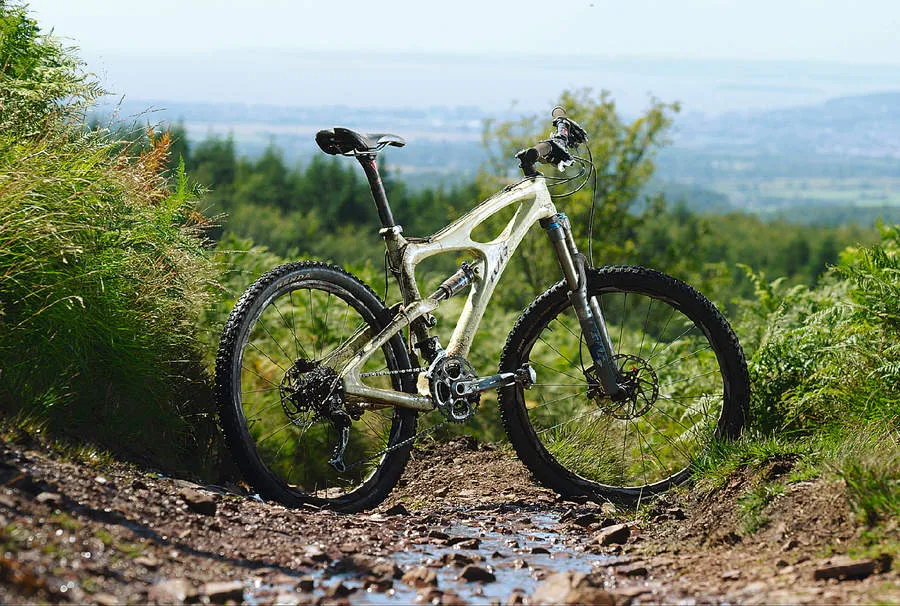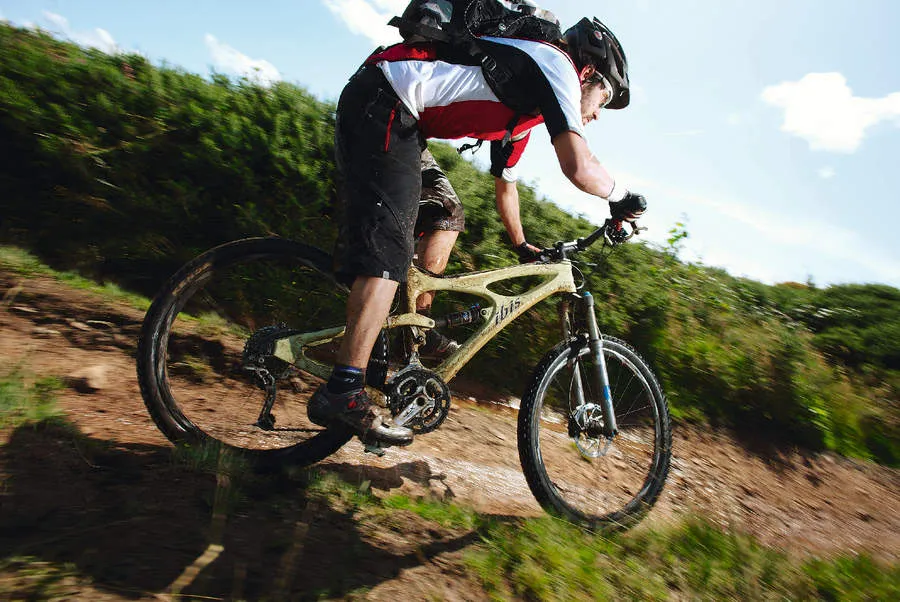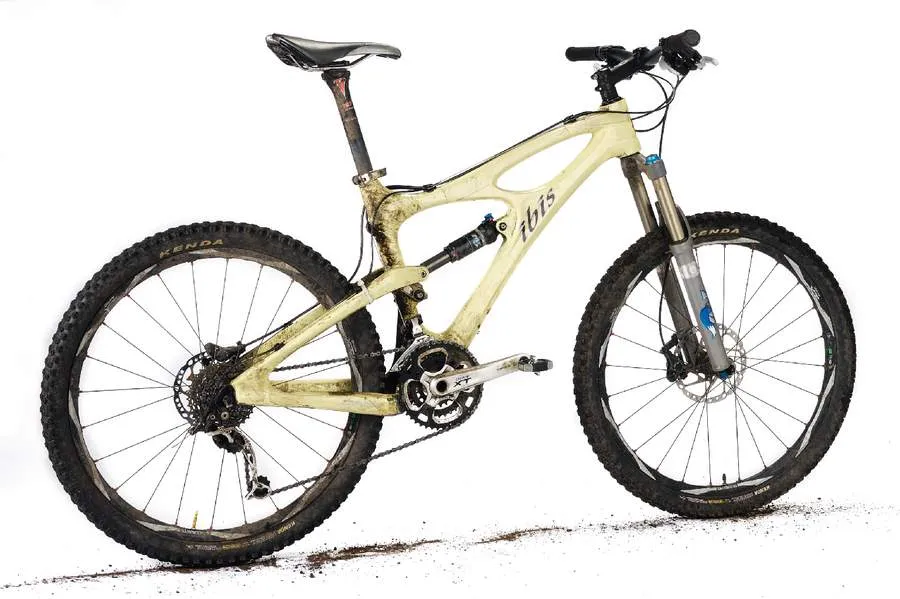Three years after we first saw one, the Mojo is still an outstanding looking bike. Working out down the dual slalom gym has done wonders for its aggression levels, too.
It lacks the sharp edge of our favourite rides, but if you’re after a totally capable, trustworthy lightweight trail bike that’ll let you get on with enjoying the ride to the full it’s still an absolute classic.
Ride & handling: Beautifully neutral, giving you a clear head to tackle the trail
The impressive thing about the Ibis is that the whole ride feels as well rounded as it looks. Even with a relatively narrow bar and long stem it threads and weaves through the trees with an assured and smoothly obedient ease.
Plug in bigger bars and, while it accentuates the softness of the frame, it can still be hauled around turns inside its natural arc. When you do push too hard the rear end just steps out smoothly and predictably to nudge the nose in while the back re-sticks itself ready to drive out.
The relatively compact frame dimensions make it easy to move your weight between the wheels. This means totally instinctive and stress-free control of slip or grip at either end when the relatively narrow Nevegal tyres get out of their depth.
Typically for a bike with a dw-link design, the suspension is equally well sorted. It feels positive through the pedals for good traction management, but it’s steady under power even without ProPedal platform damping switched on.
Despite the small volume tyres, bump response is controlled, comfortable and capable right through from root rattle to big boulder hits and drops. The new squarer, stiffer links create a much more solid connection between front and rear ends than the flexy older Mojo.
There’s still noticeable twist in either end compared with the stiffest competition, but it’s spread evenly throughout the frame. It just translates as a slight softness through pedals and tyres when you get aggressive.
Frame: Still looks totally fresh and unique; right on the money in performance terms too
A reinforced head tube swallows the integrated headset while the monocoque frame flows back in an organic X-braced mainframe layout. More curved and flowing tubes form the equally ‘grown’ looking rear swingarm, although additional protection underneath is essential to stop chain slap damage.
The detailing really stands out too: a sculpted quick-release lever sits at the top of the extended seat tube while cutaway pockets on the frame take the short upper and lower dw-link linkages.
These are now the beefed-up Lopes Links designed for sponsored dual slalom rider Brian Lopes, complete with pressed-in bearings for easy replacement.
At under 6lb (2.7kg) frame weight it’s still competitive for a 140mm travel carbon bike, while the higher modulus carbon (heat treated for higher strength) and titanium bolt-pimped Mojo SL frame is nearly a pound lighter for an extra £350.



